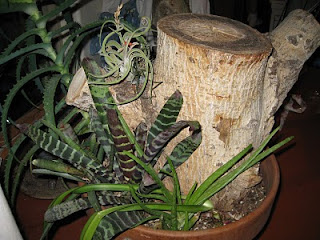
Several months ago, I saw a smallish tumble composter at the local Costco for just under $100. For those of you who haven’t priced one, that is a pretty good deal. However, with times being tight, I assumed it wasn’t really an option and it was over a week later before I thought to mention it to my wife. To my surprise, she actually thought it was a fantastic idea. I really needed a place nearby to put kitchen scraps and my garden, small though it is, needs a good supply of quality compost, but my attempts to date have not proven the match of the javelinas and my dog. The neighborhood has a wonderful compost bin, but all the proceeds go to the community garden. A tumble composter seemed like the perfect solution. So I rushed out to the store. To my chagrin, they were no longer available.
Over the next week or so, I mourned the missed opportunity and realized just how perfect it would actually be for my situation. Then I started researching other inexpensive compost tumbler options. I happened across one that was made from a 55 gallon plastic barrel. It just so happens that my local Coca-Cola bottler gives those things out when they are done with them, and I had two just sitting there waiting to be made into a pair of rain barrels. I hadn’t really worked out the best way to install them in series, so I hadn’t built the barrels. A few days of planning out the best way to do it and I was off to the store.
I thought of all kinds of complicated, awesome ways to do it, but opted instead for simple. I bought a 1” galvanized steel pipe, a kit to make a clamp-style sawhorse and 2x4s for the legs, a pair of hinges and a pair of latches. I drilled a 1” hole (1 ¼”, actually, I couldn’t find the 1” bit) in the center of the top and the bottom of the barrel and then used a jigsaw to cut a panel out of the side for the door. I installed the hinges and latches and threaded the pipe through the holes. Then I installed the legs to the saw horses and put it all together. The whole project cost me about $50 in materials (the barrel itself was free, after all) and took me about 2 hours start to finish.
Last fall I raked up the leaves at my old house and bagged them up. Not wanting to throw them away, they had been sitting on my back patio waiting for a big enough compost bin. I had to stuff and moisten and stuff some more, but I got them all in, along with the compost from my little previous bin. That was late winter, and the volume has been slowly decreasing, despite a steady stream of kitchen waste and weeds. I have a number of worms that came with the original compost and they have been working diligently on the pile. I’ve been pulling them out as much as I can since the compost will eventually heat up and kill what’s left. So far I have probably harvested a pound or two of worms from the bin and there’s still no shortage.
The point of a tumble composter is to make hot composting easier. A hot compost pile needs to get up to about 150 degrees F to really do its work. In order to do that, it needs a steady supply of oxygen. That is a tall order in a stationary bin. It involves a lot of work turning it. There are all kinds of tricks and tools, but they each have their own limitations and many still require lots of work. With a tumble composter, you just give it a few spins and the pile is fully aerated. The only problem with mine was that between the cold weather this spring and the high carbon content of the pile, it wasn’t heating at all. This weekend that finally changed. I did a little maintenance on the bin last Saturday and found a pocket of heat. Sunday nearly the whole bin was warm. From here on out, all I need to do is spin it every couple of days to keep it oxygenated. In another month or two, I’ll be ready to start using compost. I can’t wait.
Note: The composter currently lacks lateral stability. There is really nothing keeping the pipe in the sawhorse clamps but gravity. A good shove on the side will send it right over. I bought a chain to install in an X pattern between the legs. That will provide the support it needs to not fall over should something happen. I just haven’t gotten it done yet.





